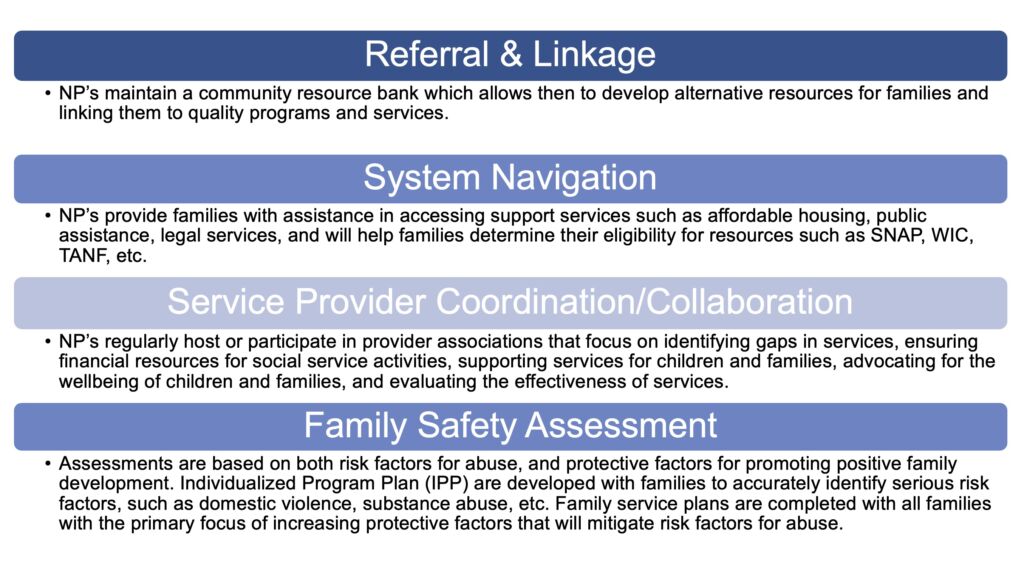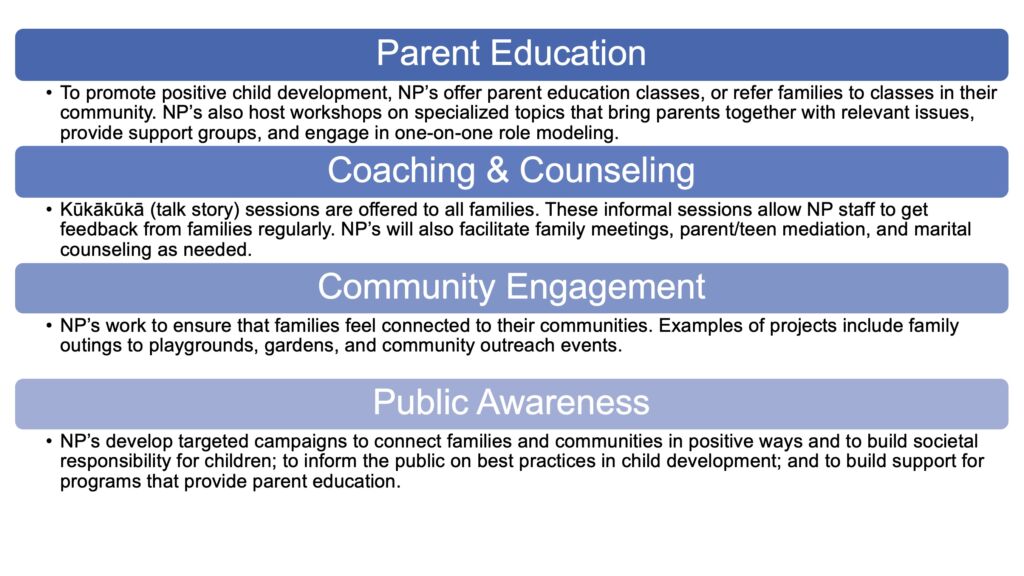Instances of abuse and neglect have severe short and long term consequences for both the children and families who are directly involved, and for the community at large. These consequences include, but are not limited to, immediate physical harm to the child resulting in broken bones, disability, sensory impairment and health. Long term effects of intellectual and social impairment of the child, societal effects of juvenile delinquency and resulting criminal behavior, mental illness and substance abuse, abuse of future generations (the cycle of abuse) and staggering financial costs associated with child abuse cases once they enter the State’s Child Welfare System.
The target population for our Neighborhood Place services are families who are at-risk for child abuse and neglect in the communities of Waiʻanae, Kalihi, Waimanalo, on the island of Oʻahu; the districts of Puna and Kona, on the island of Hawaiʻi; Wailuku and Kahului, on Maui; and the communities of Waimea and Kapaʻa on the island of Kauaʻi. These areas have been identified by the State’s Department of Human Services as being high-risk for child abuse and neglect due to the average family income level of each location, as well as the volume of calls received by Child Welfare Services (CWS) intake offices located in each of the respective regions.
A major component to the success of services is the fact that any family, regardless of circumstances or referrals, can obtain services. Most families have a six-month relationship with a Neighborhood Place, with an option of ongoing support for up to a year. Though the Neighborhood Places are able to develop services that reflect the needs of their respective communities, they all provide the following core activities:


